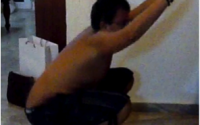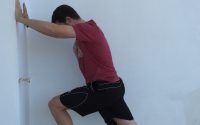System Flexibility
Amazing response to last weeks post ‘Muscles Working as Pumps and Springs’. I definitely think we will be coming back to running again soon 🙂 Today we will be getting back to the principles of function and looking at ‘System Flexibility’.
Following on closely behind 3D movement is system flexibility. They are related because by progressing to 3D movements you are already introducing system flexibility. However, that is only the start of the process, system flexibility can go a lot further.
How far you go with system flexibility clearly depends on the patient you have infant of you. You need to consider the tasks that they need to complete and ensuring they have the required physical capacity. You will definitely need to consider different options if you have an post op 65 year old TKR, compared to a post of 25 year old rugby player.
The difference in these two cases will be many, but in terms of system flexibility you will need to rehab them to different levels. One is not easier to do than the other, as quite possibly you will be pushing to get them both as physically able as possible. The point is, what ever their goal, your rehab should reflect it.
System flexibility isn’t just about 3D motion. I think once you start adding variety you can add in a whole lot more:
- Movement in many directions
- Multiple drivers
- Changes in speed
- Height changes
- Adding weight
- Adding equipment (unstable surface, slippery surface)
- Reactive components
This is certainly not an exhaustive list, but goes to show how much you can add in. You certainly don’t need to do this all in one session and I would avoid giving dozens of exercises out every session. However, you can build towards this.
For example, lets take the 65 year old TKR patient. Once you’ve got them to the squatting and sit to stand stage and they are nice and safe with it. Teach them how to squat with different foot positions, for example. They need to solve lots of physical ‘puzzles’ in order to build confidence and increase their physical capacity.
If you picture the typical exercises that these patients are prescribed, you can see there is a massive gap between the physical capacity it takes to achieve the exercises and the functions they are trying to achieve. Even basic activities like walking, stairs and getting in and out of a chair take much more rehab to achieve knee extensions and leg raises. These are important to do, but the rehab doesn’t stop there!
Like many of these principles, one feeds into the next. 3D rehab feeds into system flexibility. So system flexibility feeds into subconsciously driven movement. The variety of movement when you challenge the body like this means that the patient has to solve many physical puzzles. This exploration of movement means you can avoid conscious control of the movement at the target tissue. This really helps with confidence during development of physical capacity.
Physioblogger
Related Posts:
- Joint Relationships
- Subconsciously Driven Movement
- Movement in 3 Dimensions
- Gravity and Ground Reaction Force
- Mass and Momentum


